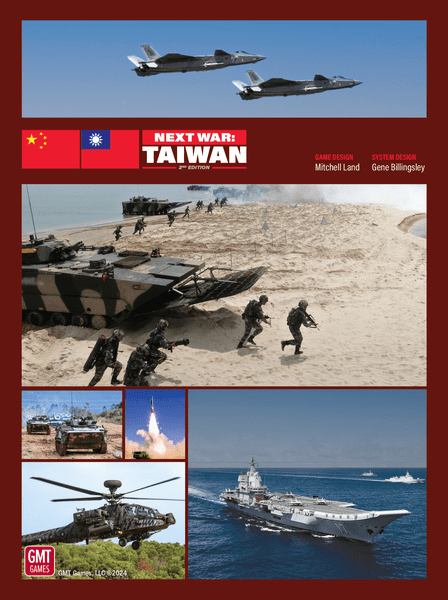Next War: Taiwan (2014) Board Game
Next War: Taiwan is a modern warfare board game that simulates a hypothetical conflict between China and Taiwan. Released in 2014, the game is designed by Charles Kibler, Rodger B. MacGowan, and Mark Simonitch, and published by GMT Games. With a focus on strategic decision-making and tactical combat, Next War: Taiwan offers players a deep and immersive gaming experience set in a contemporary military scenario.
Game Components of Next War: Taiwan
How To Setup Next War: Taiwan
Setting up *Next War: Taiwan* involves placing the game map, deploying units according to the chosen scenario, and organizing the various tracking and holding boxes. Each scenario has specific setup instructions to reflect different initial conditions of the conflict. For example, the first three Standard Game scenarios focus on the initial assaults by the PRC to establish beachheads and take ports.
Gameplay Mechanics and Game Objective
Player Experience
Playing *Next War: Taiwan* offers a deep and complex experience, particularly appealing to fans of modern military strategy and wargaming. The game requires careful planning and execution, especially given the intricate naval and air combat systems. Players must balance resources, manage unit deployments, and adapt to changing circumstances on the battlefield.
Pros
Cons
Personal Thoughts on Next War: Taiwan
*Next War: Taiwan* is ideal for seasoned wargamers and those interested in modern military strategy. It provides a detailed and immersive experience, allowing players to delve into the intricacies of a potential conflict in the Taiwan Strait. However, due to its complexity and cost, it may not be the best fit for new or casual gamers. This game is for those who are willing to invest time and effort into understanding its mechanics and scenarios, and who are keen on strategic and tactical planning in a military context.
We are supported by our audience. When you purchase through links on our site, we may earn an affiliate commission, at no extra cost for you. Learn more.

